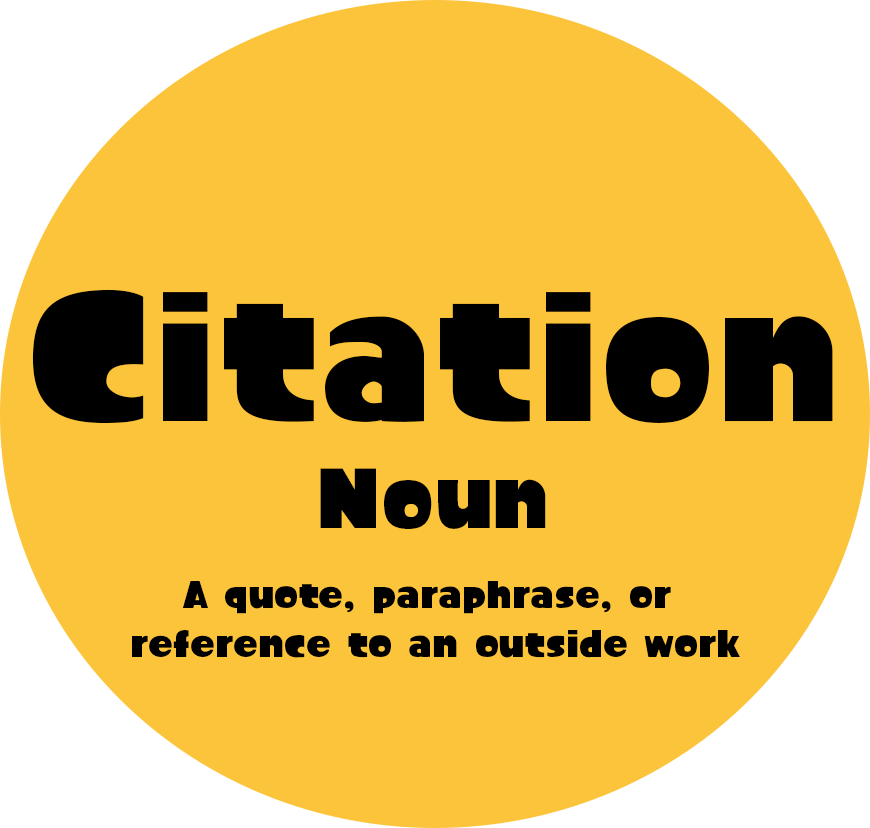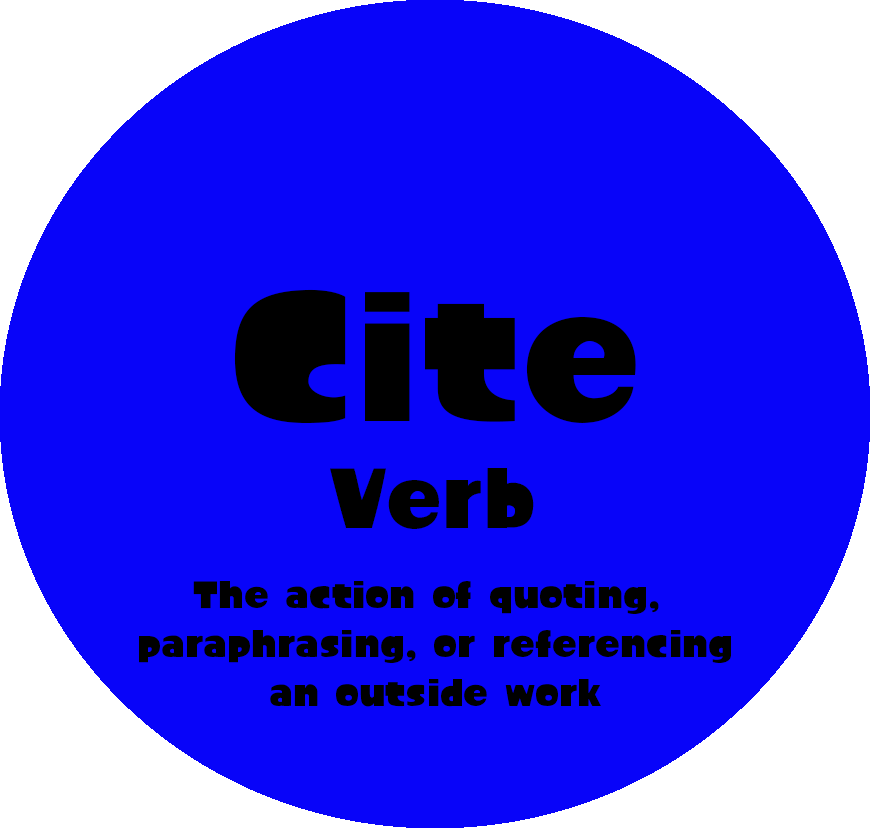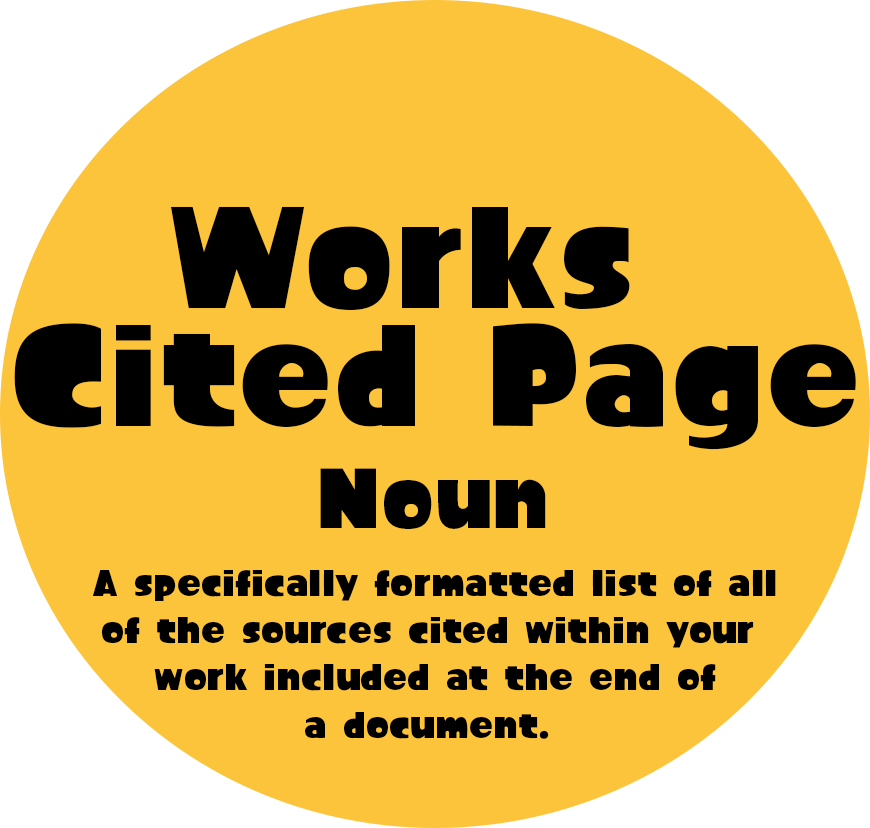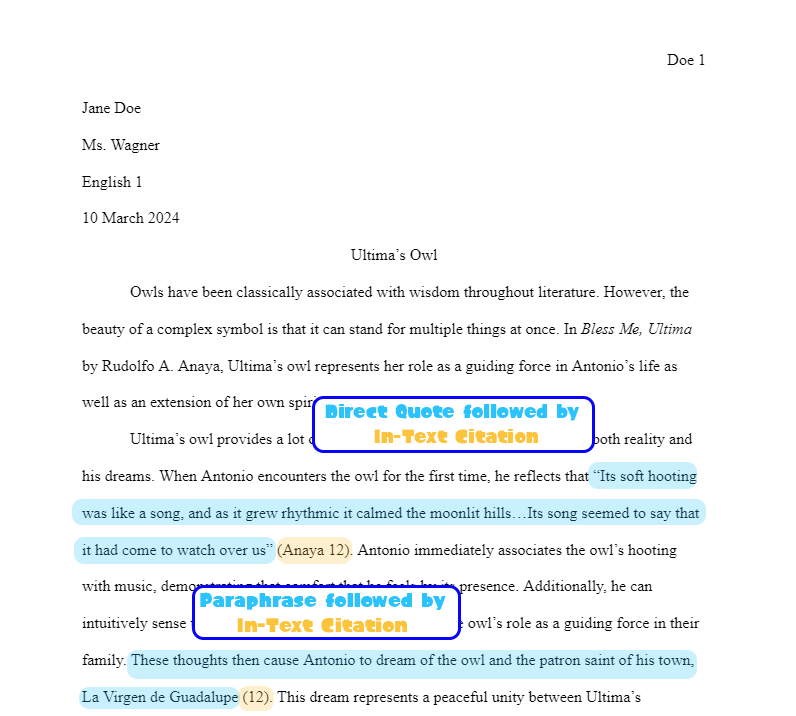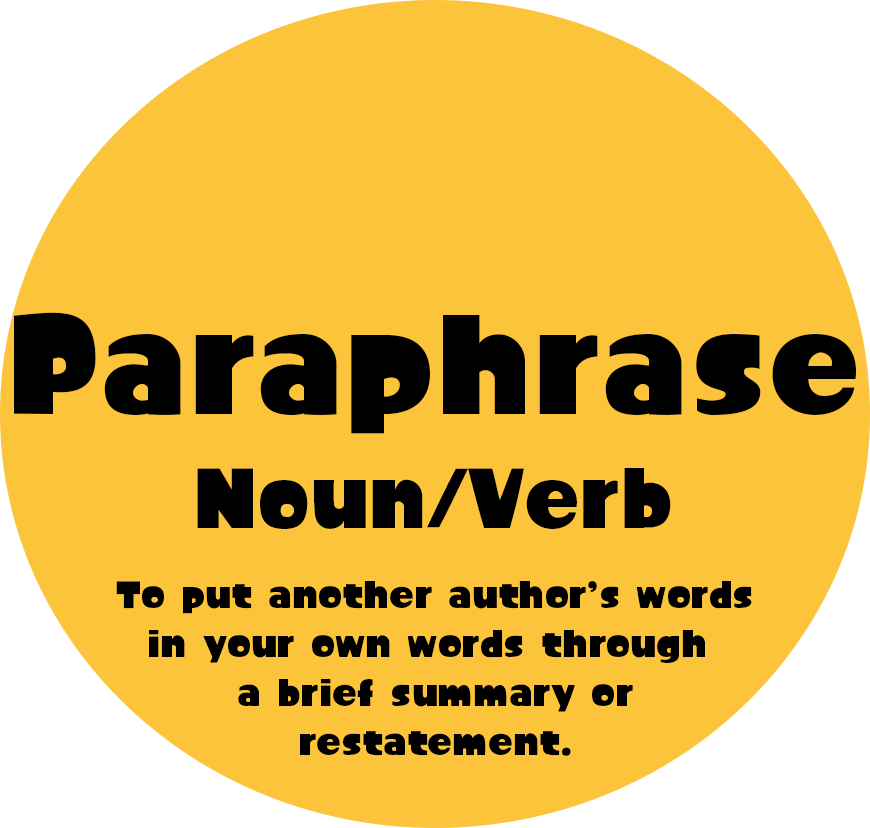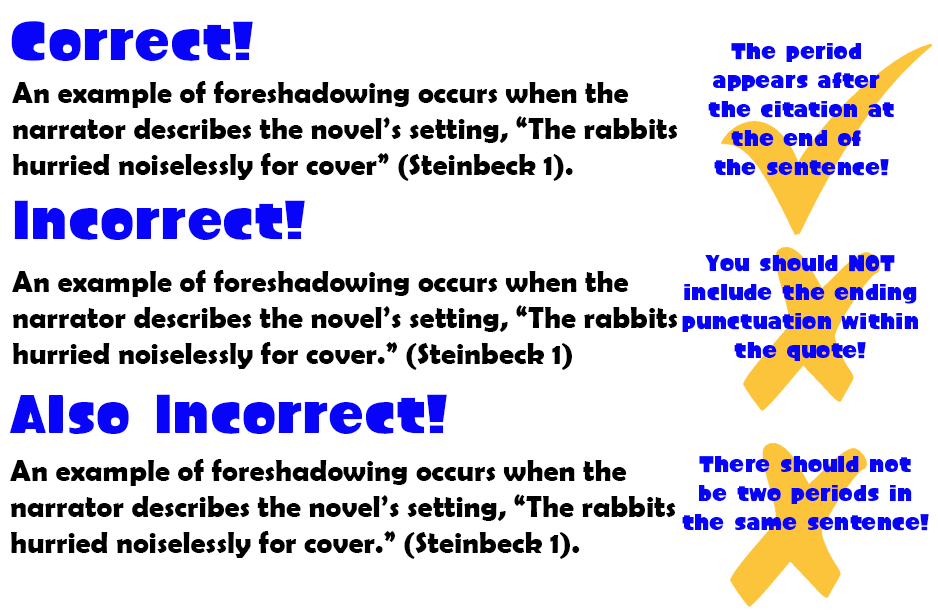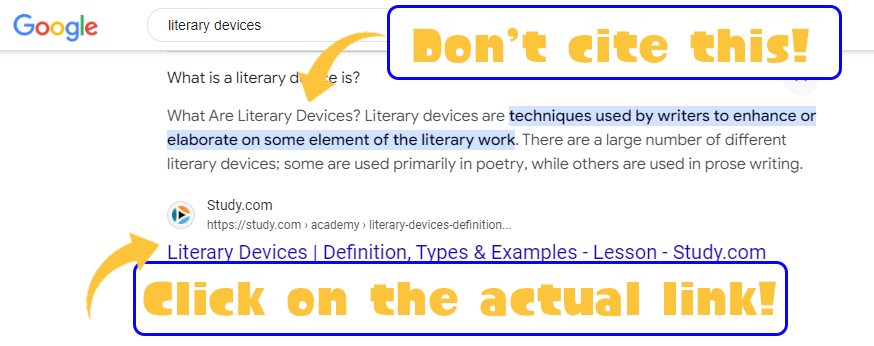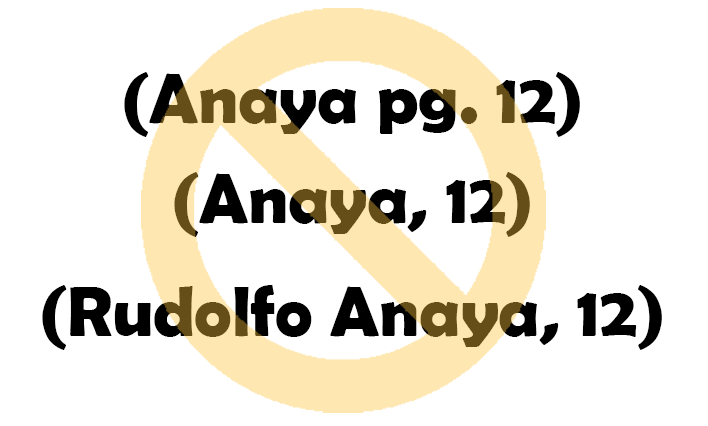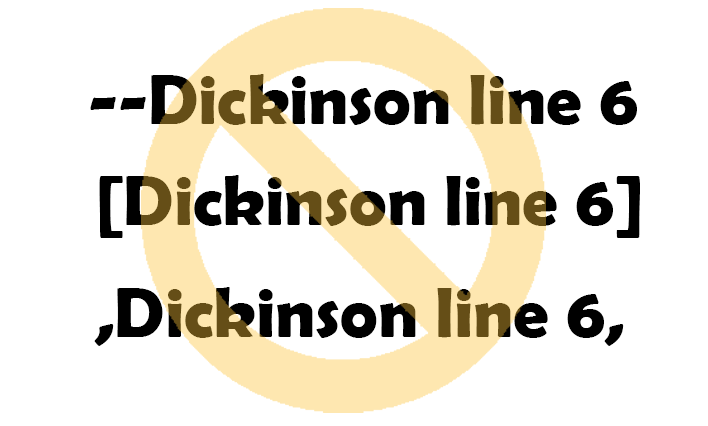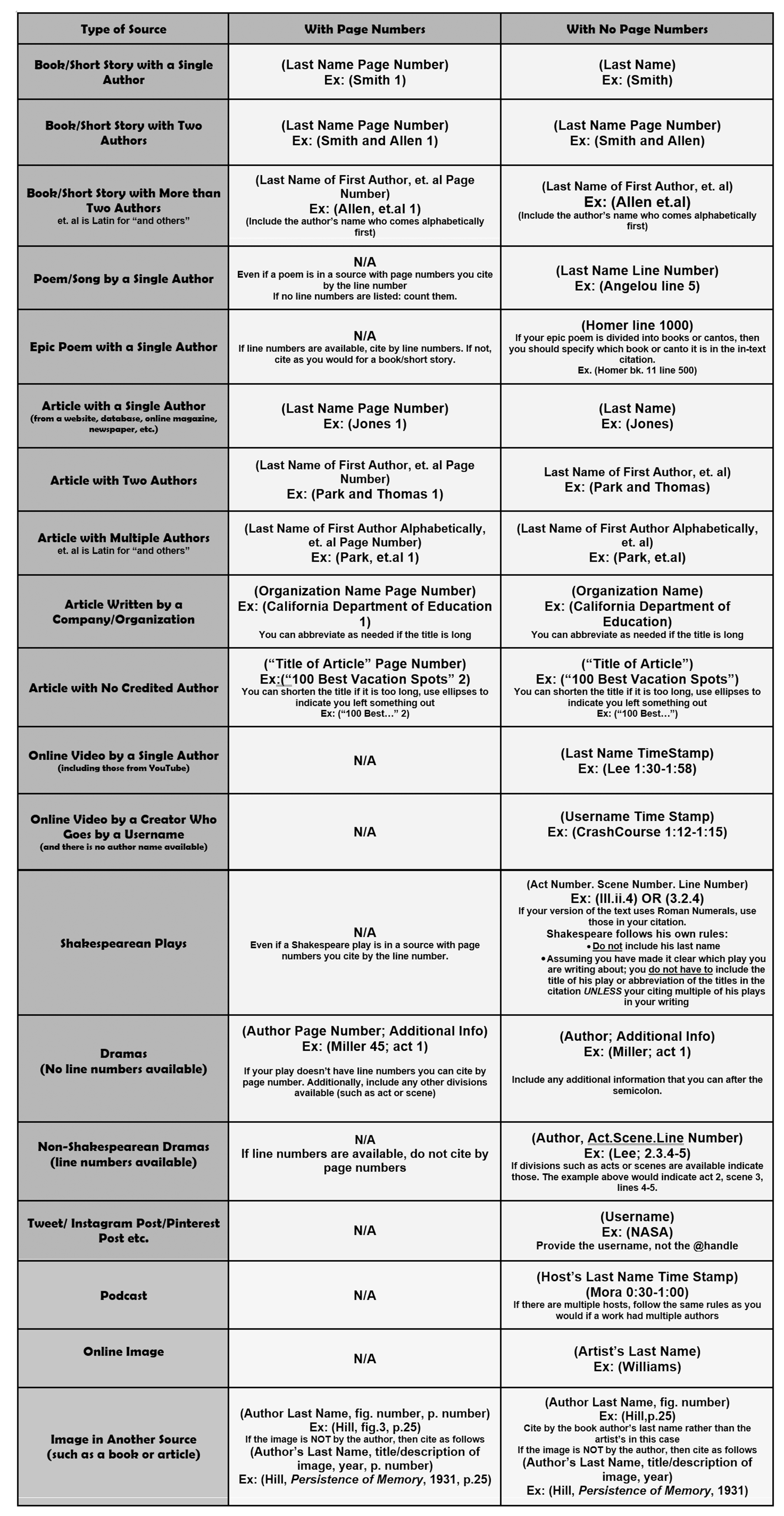MLA CITATIONS
What does it mean to CITE something?
In writing, a CITATION is a reference to an outside source such as a piece of literature, poem, article, or website. CITATIONS can help strengthen your claims and analysis by providing textual support.
How do you properly cite a source in MLA format?
To correctly CITE information from an outside source in MLA format, you must include both an IN-TEXT CITATION in parentheses after your QUOTE or PARAPHRASE as well as a WORKS CITED page at the end of your essay.
Why is it necessary to CITE my sources?
You must correctly indicate when the words you are using are not yours in order to avoid PLAGIARISM. MLA provides a structure for you to use in order for you to properly credit outside information and avoid academic dishonesty.
How to Create MLA In-Text Citations
Example in Practice
Helpful Hint:
In MLA format, if you cite the same author and text multiple times in a row, you do not have to repeat the author’s name after the first in-text citation. Instead, you can replace it with just the page number. The sample essay above provides an example of this in context. However, do note that if you cite from another work or author in the same essay, you must restate the author’s name again in your in-text citation.
MLA has a specific set of rules for every type of work you might cite. Let’s start by going over the most common and basic in-text citation that you will utilize: a book or short story with a single author.
To create an in-text citation for literature such as book or short story, you should format your citation as follows:
Your citation should appear in parentheses after your direct quote or paraphrase from your source and should include the author’s last name and page number with no additional information. In practice, it should look something like this:
This in-text citation should appear AFTER the quote or paraphrase, but BEFORE the ending punctuation of your sentence.
What if what I want to cite spans across two or more pages?
Frequently Asked Questions
If your quote or paraphrase continues on to the next page, write the page numbers as a range as show to the right. Include a hyphen (dash) between the two page numbers.
Example:
What do I do if I want to cite two different pages from the same text within the same sentence in my writing?
If you quote from two different parts of the same text within the same sentence, include each separate page number separated by a comma in the order you cited from them.
Example:
What do I do if I’m citing from an ebook or PDF that has no page numbers listed?
Simple: you don’t include page numbers. If the text you’re citing from doesn’t include them, don’t add them. You should not cite by paragraph numbers nor make up page numbers. Instead, just include the author’s last name.
Example:
Additionally, in this case, you would need to repeat this citation following every time you cite from this work going forward and you cannot shorten it as explained in the Helpful Hint in the previous section.
Below are some common mistakes related to in-text citations that I have seen students make in the past. Review the following mistakes so that you can avoid them in the future! And, if you’ve made these mistakes before, that’s okay: mistakes are just part of the learning process! MLA in particular can be very tricky so don’t worry if you don’t get it right away. It will make more sense with practice and time!
Common Errors!
Citing Google or the AI Overview Instead of the Original Source
Google is a search engine and can be a helpful resource when looking for research. However, many students mistake Google’s suggestions either at the top of your search or in the drop down quick responses as being written by Google. These are merely just previews of the actual source or website. You must cite the actual website your information came from—not just the Google search that got you there!
Adding Unnecessary Things to In-Text Citation
For a basic MLA in-text citation, you only need the author name and the page number. Do not add any additional formatting, punctuation marks, or information or the citation is not considered correct.
Example:
Not Using Parentheses Around Your In-Text Citation
Sometimes, students use different punctuation for their in-text citations (or no punctuation at all!) MLA requires that you use parentheses around your citation.
Example:
How to Create In-Text Citations for Other Types of Sources
MLA has specific guidelines that you should follow for all possible sources that you could cite in your writing including articles, YouTube videos, poems, plays, and even social media posts! Below you will find a chart with specific directions for each source type as well as examples. Note that this chart does not cover EVERY possible source type, but does cover the ones you are most likely to encounter in your research.
What do I do if I want to cite two different texts by the same author?
Frequently Asked Questions
In this particular case, you would have to distinguish the two different texts by including the title of the work in the in-text citation. See the example to the right to see how to do this. Additionally, if the title is very long, you can shorten the title as needed.
Example:
I know I need to cite for a direct quote or a paraphrase. What about a summary of an entire text?
You do not need to cite if you are summarizing a whole work or large portions of a work. Only cite when you are referring to specific portions of the text.
More than likely, you will have no need to memorize this information in the real world. All throughout my undergraduate and graduate education as an English major, there was never a time where I was required to memorize MLA citation—mostly because MLA changes and updates every few years (we are on the 9th edition now). Instead, know your basics and how to find the information you need and, in time, you may find that you can recall what you need to know without the need to look it up (at least until MLA 10th edition comes out!)
Do I have to memorize all of this stuff?
Wait, the source type I am citing from isn’t listed in your chart! What do I do now?
There are a lot of online resources designed to help answer this question. I recommend consulting the links provided to the right with further help finding the information you need!
Nope! If you cite any outside information you need in-text citations AND a Works Cited page. Click the button to the side to navigate to page on how to format a Works Cited page in MLA format!
So, if I’m writing an essay and I include in-text citations then I’m done, right?
Do I need to cite if the quote I am using is well-known or commonly used?
If the quote can be attributed to one specific person then it must be cited! If your quote is a common expression that no one person is credited with such as “an apple a day keeps the doctor away” then it does not need to be cited.
